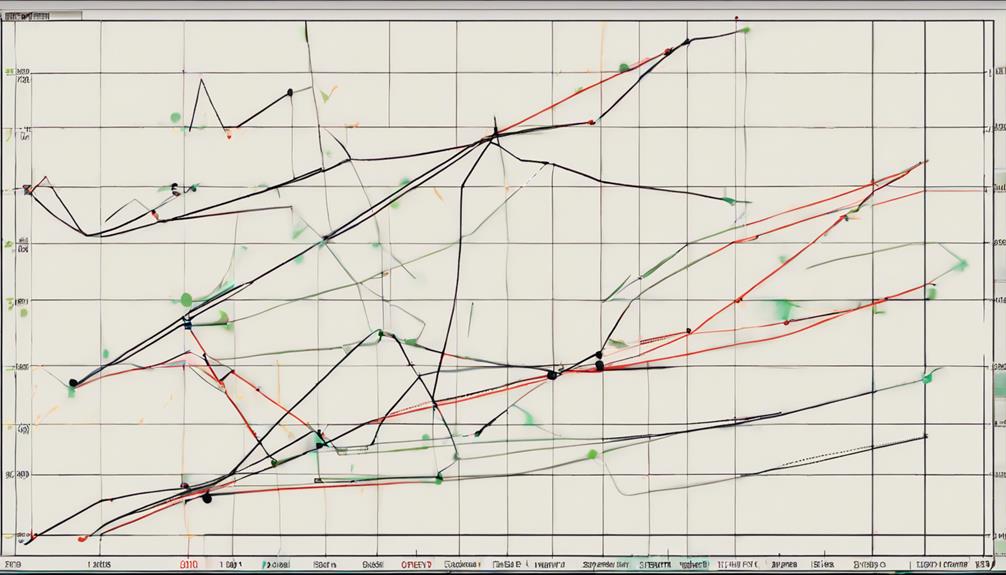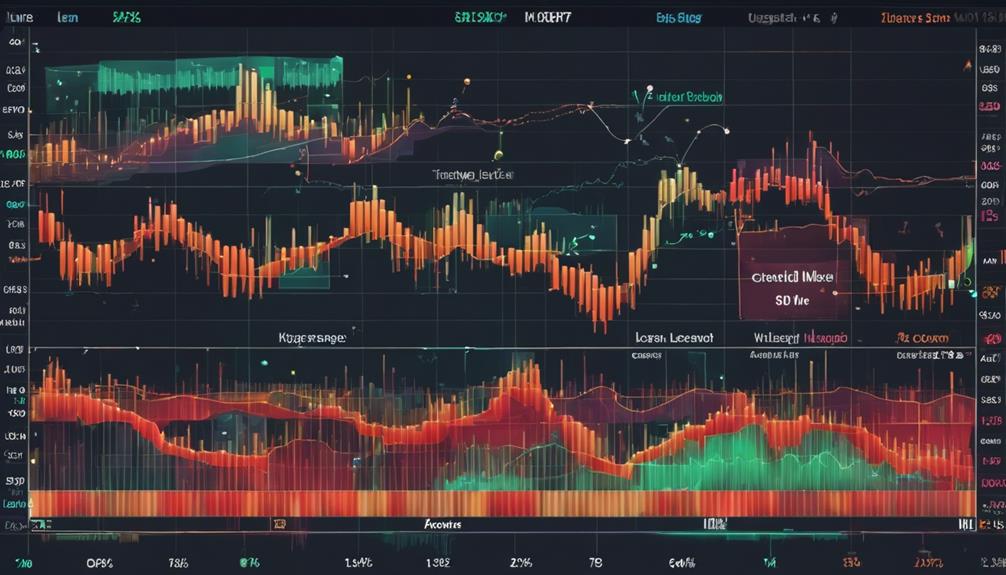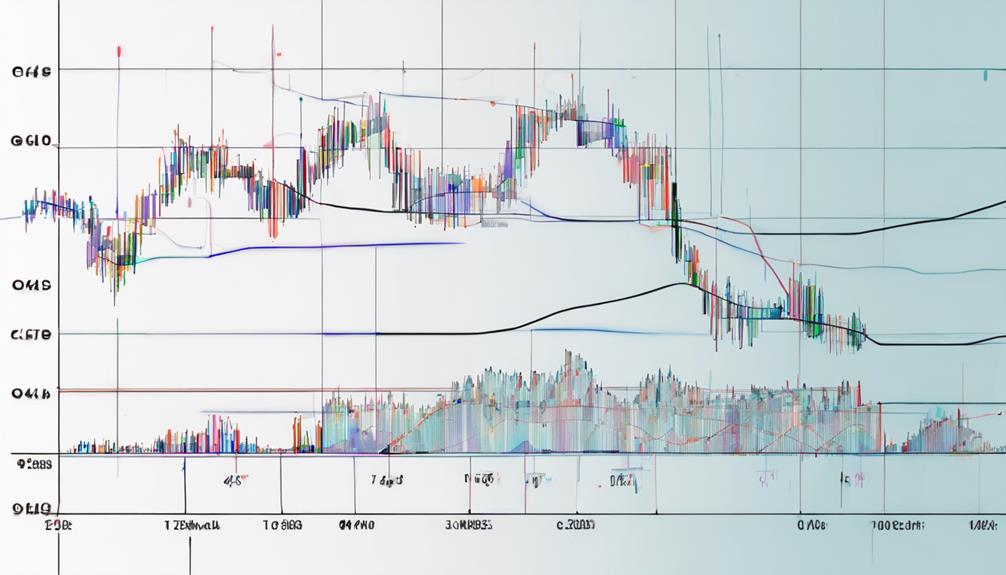Exploring the nuances of the Ultimate Oscillator delves into a realm where precision meets strategy, offering traders a glimpse into the intricate workings that underpin this powerful technical tool.
By uncovering the intricacies of its calculation methods and the subtle cues it provides through divergences, traders can unlock a deeper level of insight into market dynamics.
Understanding how the Ultimate Oscillator interacts with various market conditions and integrates with complementary indicators could be the key to maximizing its potential and gaining a competitive edge in the dynamic world of trading.
Understanding Ultimate Oscillator Basics
The foundation of understanding the Ultimate Oscillator lies in grasping its unique approach to blending multiple timeframes for comprehensive market analysis. Developed by Larry Williams in 1976, this oscillator incorporates three timeframes: short-term (7 periods), medium-term (14 periods), and long-term (28 periods). By combining these timeframes, the Ultimate Oscillator generates stable signals that offer valuable insights to traders.
Buy signals are triggered by bullish divergence when the oscillator falls below 30, indicating a potential buying opportunity. Conversely, sell signals are produced by bearish divergence when the oscillator rises above 70, suggesting a potential selling point. Unlike some other oscillators, the Ultimate Oscillator does not typically include a signal line. This distinguishes it in the market analysis toolkit and emphasizes its reliance on the multi-timeframe construction for providing traders with clear and actionable signals.
Understanding these basics is crucial for effectively utilizing the Ultimate Oscillator in trading strategies.
Calculating Ultimate Oscillator Formula

Building on the foundational understanding of the Ultimate Oscillator's operational principles, the calculation of the oscillator's formula is a meticulous process that involves deriving key components like Buying Pressure (BP) and True Range (TR) for each specified period. These values are calculated over 7, 14, and 28 periods.
Buying Pressure (BP) is determined by comparing the closing price to the true low, while True Range (TR) measures the volatility of the security. Weighted averages of BP and TR are then computed over the specified periods, with the values combined in a ratio of 4:2:1.
The final outcome of these calculations is the Ultimate Oscillator (UO), a key indicator in technical analysis. The UO is utilized to identify buy and sell signals accurately, making it a valuable tool for traders and analysts. By understanding the intricacies of the Ultimate Oscillator formula and its components, investors can gain insights into market trends and make informed trading decisions.
Interpreting Ultimate Oscillator Signals

When interpreting Ultimate Oscillator signals, traders analyze key threshold values to gauge market conditions accurately. Here are essential points to consider:
- Ultimate Oscillator values above 70 indicate overbought conditions, suggesting a potential reversal or correction in the market.
- Conversely, values below 30 on the Ultimate Oscillator suggest oversold conditions, indicating a possible buying opportunity.
- Bullish divergence occurs when the price makes a lower low while the Ultimate Oscillator makes a higher low below 30, triggering buy signals.
- Sell signals are generated with bearish divergence above 70 on the Ultimate Oscillator, signaling a potential downturn in the market.
Utilizing Ultimate Oscillator in Trading

Utilizing the Ultimate Oscillator in trading involves strategically leveraging its multi-timeframe analysis to pinpoint optimal entry and exit points based on overbought and oversold conditions. By incorporating three different timeframes (7, 14, and 28 periods), this technical indicator provides traders with reliable signals to make informed decisions.
Buy signals are generated when the Ultimate Oscillator falls below 30, indicating an oversold condition in the market. Conversely, sell signals are triggered when the oscillator rises above 70, signaling an overbought scenario.
Renowned trader Larry Williams has introduced a three-step approach to further enhance the accuracy and dependability of Ultimate Oscillator signals. This methodical strategy enables traders to interpret the signals more effectively and take advantage of the opportunities presented by the market fluctuations.
Exploring Ultimate Oscillator Strategies

Exploration of various Ultimate Oscillator strategies unveils nuanced approaches to effectively capitalize on market movements and optimize trading outcomes.
When delving into Ultimate Oscillator strategies, traders can consider the following:
- Utilizing Buy Signals: One approach involves leveraging buy signals when the Ultimate Oscillator shows bullish divergence below 30, indicating potential buying opportunities.
- Spotting Sell Signals: Sell signals can be identified when the Ultimate Oscillator exhibits bearish divergence above 70, suggesting potential selling points.
- Larry Williams' Three-Step Approach: Traders can implement Larry Williams' three-step method to generate reliable buy and sell signals using the Ultimate Oscillator, providing a structured framework for decision-making.
- Parameter Optimization: Effective implementation of specific parameters and divergences is crucial in fine-tuning Ultimate Oscillator strategies for enhanced precision and profitability.
What are the advanced details of the Ultimate Oscillator that I should know about?
When delving into advanced ultimate oscillator insights, it’s crucial to understand that this technical analysis tool combines short, intermediate, and long-term periods to measure momentum. It uses weighted averages to calculate overbought and oversold conditions, offering a more comprehensive view of market trends for informed decision-making.
Frequently Asked Questions
How Does Ultimate Oscillator Work?
The Ultimate Oscillator works by combining three timeframes (7, 14, and 28 periods) to calculate a weighted average, generating buy/sell signals based on Buying Pressure (BP) for each period. It ranges between 0-100, with values above 70 signaling overbought and below 30 indicating oversold conditions.
What Is the Difference Between RSI and Ultimate Oscillator?
The Ultimate Oscillator, unlike the RSI, integrates three timeframes for a comprehensive view. It lacks a signal line, relying on divergences for cues. This difference, along with distinct calculations, influences the indicators' signal reliability and suitability for various trading strategies.
What Is the Technical Indicator of Uo?
The technical indicator of UO, developed by Larry Williams, combines 7, 14, and 28-period timeframes to gauge market momentum. Values range from 0 to 100, with overbought above 70 and oversold below 30, aiding in trend identification and buy/sell signals.
What Is the Difference Between Stochastic and Ultimate Oscillator?
The difference between the stochastic and ultimate oscillator lies in their approach to generating signals. Stochastic oscillator focuses on single timeframe crossovers with a signal line, while ultimate oscillator utilizes divergences across three timeframes, offering a broader perspective for traders.
Conclusion
In conclusion, delving into the depths of Ultimate Oscillator details unveils a dynamic tool for traders seeking precise buy/sell signals. By mastering the multi-timeframe approach, weighted averages, and divergence analysis, traders can enhance their trading prowess.
Integrating the Ultimate Oscillator with other indicators and strategies amplifies accuracy, trend identification, and decision-making capabilities. Embracing this tool empowers traders to navigate the markets with finesse and finesse.
